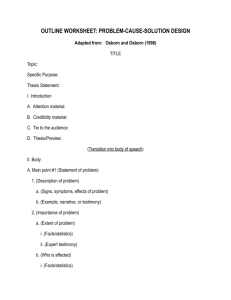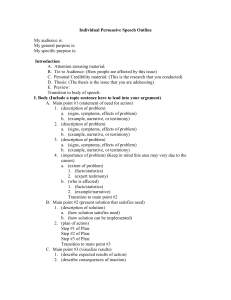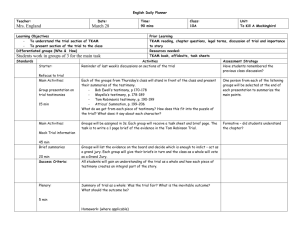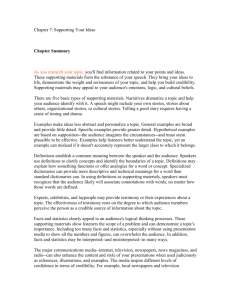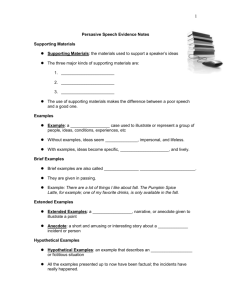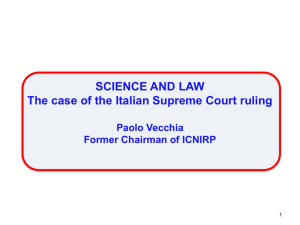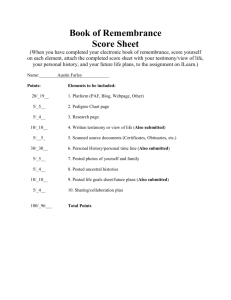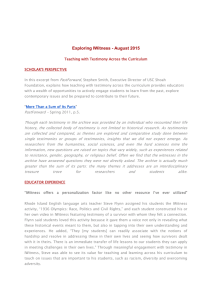Speech Checklist: Introduction, Body, Conclusion
advertisement
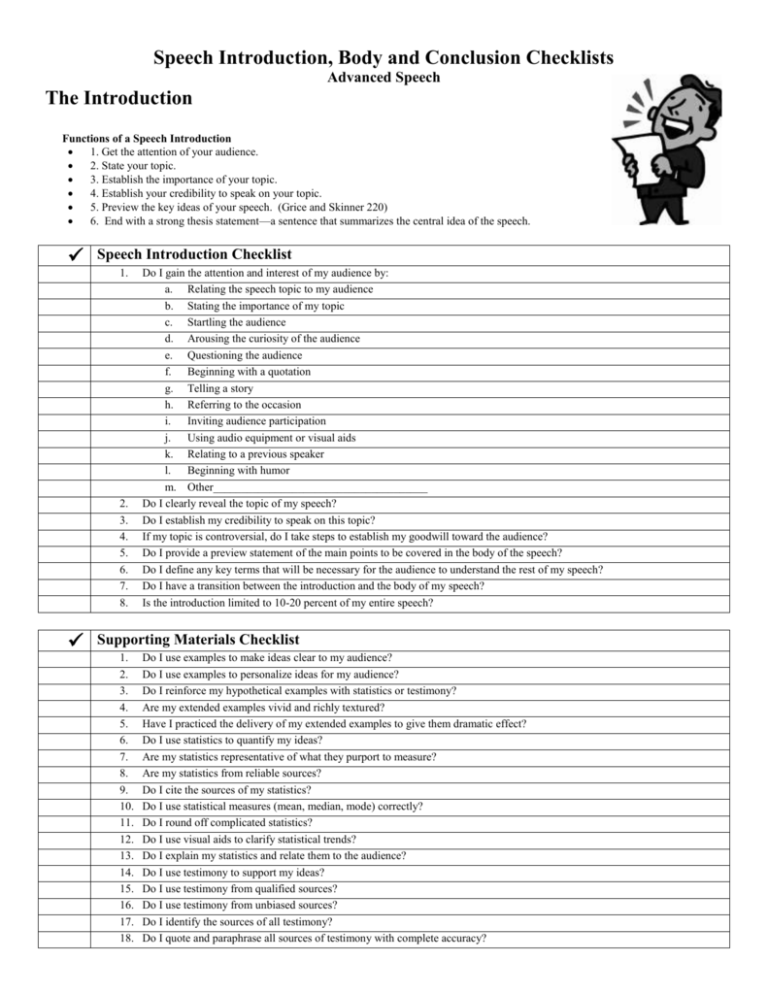
Speech Introduction, Body and Conclusion Checklists Advanced Speech The Introduction Functions of a Speech Introduction 1. Get the attention of your audience. 2. State your topic. 3. Establish the importance of your topic. 4. Establish your credibility to speak on your topic. 5. Preview the key ideas of your speech. (Grice and Skinner 220) 6. End with a strong thesis statement—a sentence that summarizes the central idea of the speech. Speech Introduction Checklist 1. 2. 3. 4. 5. 6. 7. 8. Do I gain the attention and interest of my audience by: a. Relating the speech topic to my audience b. Stating the importance of my topic c. Startling the audience d. Arousing the curiosity of the audience e. Questioning the audience f. Beginning with a quotation g. Telling a story h. Referring to the occasion i. Inviting audience participation j. Using audio equipment or visual aids k. Relating to a previous speaker l. Beginning with humor m. Other______________________________________ Do I clearly reveal the topic of my speech? Do I establish my credibility to speak on this topic? If my topic is controversial, do I take steps to establish my goodwill toward the audience? Do I provide a preview statement of the main points to be covered in the body of the speech? Do I define any key terms that will be necessary for the audience to understand the rest of my speech? Do I have a transition between the introduction and the body of my speech? Is the introduction limited to 10-20 percent of my entire speech? Supporting Materials Checklist 1. 2. 3. 4. 5. 6. 7. 8. 9. 10. 11. 12. 13. 14. 15. 16. 17. 18. Do I use examples to make ideas clear to my audience? Do I use examples to personalize ideas for my audience? Do I reinforce my hypothetical examples with statistics or testimony? Are my extended examples vivid and richly textured? Have I practiced the delivery of my extended examples to give them dramatic effect? Do I use statistics to quantify my ideas? Are my statistics representative of what they purport to measure? Are my statistics from reliable sources? Do I cite the sources of my statistics? Do I use statistical measures (mean, median, mode) correctly? Do I round off complicated statistics? Do I use visual aids to clarify statistical trends? Do I explain my statistics and relate them to the audience? Do I use testimony to support my ideas? Do I use testimony from qualified sources? Do I use testimony from unbiased sources? Do I identify the sources of all testimony? Do I quote and paraphrase all sources of testimony with complete accuracy? The Speech Body Main Points Checklist 1. 2. 3. 2. 3. 4. 5. Does the body of my speech contain from two to five main points? Are my main points organized according to one of the following methods of organization? a. Chronological order b. Spatial order c. Causal order d. Topical order e. Problem-solution order f. Problem-cause-solution order (persuasive speeches only) g. Comparative advantages order (persuasive speeches only) h. Monroe's motivated sequence (persuasive speeches only) i. Other______________________________________ Are my main points clearly separate from one another? As much as possible, have I used the same pattern of wording for all my main points? Have I roughly balanced the amount of time devoted to each main point? Is each main point backed up with strong, credible supporting materials? Do I use connectives to make sure my audience knows when I am moving from one main point to another? Function of Speech Conclusion The speech’s conclusion serves the following function: 1. Summarize your key ideas. 2. Activate audience response. 3. Provide closure. (232) Speech Conclusion Checklist 1. 2. 3. 4. 5. 6. Do I signal that my speech is coming to an end? Do I reinforce my central idea by: a. Summarizing the main points of my speech b. Ending with a quotation c. Making a dramatic statement d. Referring to the introduction e. Other______________________________________ Is the conclusion limited to 5-10 percent of my entire speech? Have I worked out the language of my conclusion in detail? Have I practiced the delivery of my conclusion so I can present it fluently, confidently, and with strong eye contact? Have I visualized myself maintaining eye contact with my audience and waiting confidently for applause after concluding rather than rushing to my seat? (Lucas CD)
